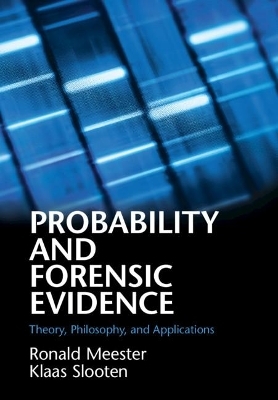
Probability and Forensic Evidence
Cambridge University Press (Verlag)
978-1-108-44914-4 (ISBN)
This book addresses the role of statistics and probability in the evaluation of forensic evidence, including both theoretical issues and applications in legal contexts. It discusses what evidence is and how it can be quantified, how it should be understood, and how it is applied (and, sometimes, misapplied). After laying out their philosophical position, the authors begin with a detailed study of the likelihood ratio. Following this grounding, they discuss applications of the likelihood ratio to forensic questions, in the abstract and in concrete cases. The analysis of DNA evidence in particular is treated in great detail. Later chapters concern Bayesian networks, frequentist approaches to evidence, the use of belief functions, and the thorny subject of database searches and familial searching. Finally, the authors provide commentary on various recommendation reports for forensic science. Written to be accessible to a wide audience of applied mathematicians, forensic scientists, and scientifically-oriented legal scholars, this book is a must-read for all those interested in the mathematical and philosophical foundations of evidence and belief.
Ronald Meester is Professor in probability theory at Vrije Universiteit Amsterdam. He is co-author of the books Continuum Percolation (1996), Random Networks for Communication (2008), and Wiskunde in je vingers (in Dutch, 2015) and has written around 120 research papers on topics including percolation theory, ergodic theory, philosophy of science, and forensic probability. Klaas Slooten works as Statistician at the Netherlands Forensic Institute and at Vrije Universiteit Amsterdam where he is Professor by special appointment. He has published around 30 articles on forensic probability and statistics. He is interested in the mathematical, legal, and philosophical approaches to the evaluation of evidence.
1. Some Philosophy of Probability, Statistics, and Forensic Science; 2. Evidence and the Likelihood Ratio; 3. The Uncertainty of the Likelihood Ratio; 4. Forensic Identification; 5. The Bayesian Framework in Legal Cases; 6. Bayesian Networks; 7. DNA; 8. Statistical Modeling and DNA Mixture Evaluation; 9. p-Values of Likelihood Ratios; 10. From Evidence to Decision; 11. The Interpretation of DNA Database Matches; 12. Familial Searching; 13. Belief Functions and their Applications; 14. Recommendation Reports; References; Index.
| Erscheinungsdatum | 06.04.2021 |
|---|---|
| Zusatzinfo | Worked examples or Exercises |
| Verlagsort | Cambridge |
| Sprache | englisch |
| Maße | 170 x 245 mm |
| Gewicht | 800 g |
| Themenwelt | Mathematik / Informatik ► Mathematik ► Wahrscheinlichkeit / Kombinatorik |
| Recht / Steuern ► Allgemeines / Lexika | |
| Recht / Steuern ► EU / Internationales Recht | |
| Recht / Steuern ► Strafrecht ► Kriminologie | |
| ISBN-10 | 1-108-44914-X / 110844914X |
| ISBN-13 | 978-1-108-44914-4 / 9781108449144 |
| Zustand | Neuware |
| Informationen gemäß Produktsicherheitsverordnung (GPSR) | |
| Haben Sie eine Frage zum Produkt? |
aus dem Bereich


